The Nine Narasimhasthalas are :- 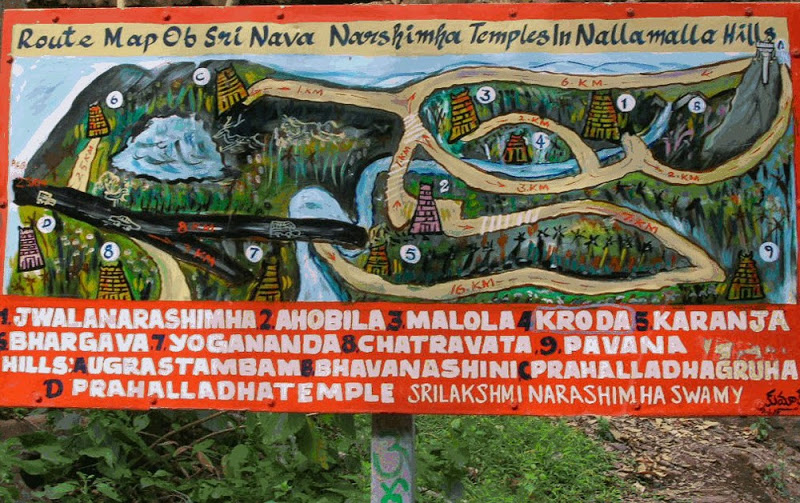
1. Jwala Narasimha
2. Ahobilam Narasimha
3. Malola Narasimha
4. Kroda Narasimha
5. Karanja Narasimha
6. Bhargava Narasimha
7. Yogananda Narasimha
8. Chatravata Narasimha
9. Pavana Narasimha
The shrine of the Ahobilam temple is situated on the top of the first range and is referred to as Upper Ahobilam and down below is called Lower Ahobilam. A huge temple surrounded by a number of buildings can be seen at the Upper Ahobilam. The main shrine or the "sacro sanctum" at Upper Ahobilam was carved out of a big egg like rock with mandapams. There is a tank here, which supplies water to the residents of the Upper Ahobliam temple. It is mainly for growing flowers for the shrine.
There is a Lower Ahobilam in the below with a big temple and enclosures, It was built according to the South Indian style. Thousands of pilgrims can stay here in this temple. The priests of both Upper and Lower Ahobilam stay there even today.
Upper Ahobliam includes the below narasimha temples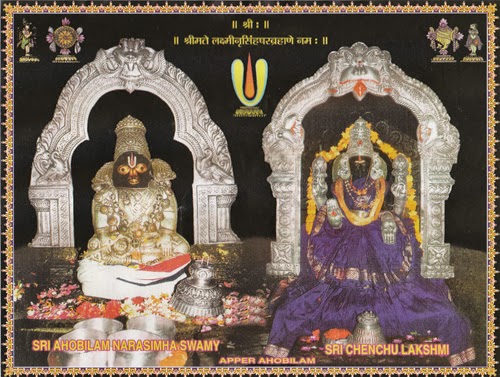
1. Ahobilam Narasimha
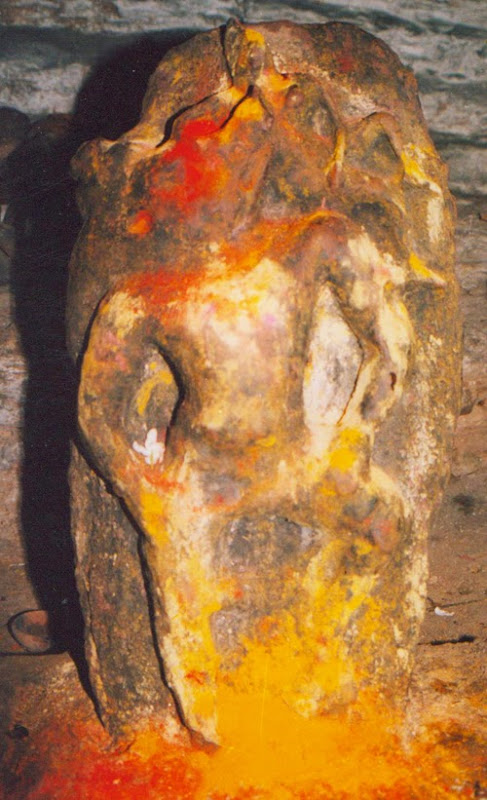 2. Kroda Narasimha
2. Kroda Narasimha
3. Jwala Narasimha
4. Malola Narasimha
Lower Ahobliam includes the below narasimha temples
1. Yogananda Narasimha
2. Chatravata Narasimha
3. Pavana Narasimha.
4. Bhargava Narasimha
On the way to Upper Ahobilam from Lower Ahobilam, we can see the Karanja Narasimha Temple.
Best way to complete all 9 Narasimha is start with Upper Ahobilam, for that you need a guide because it is inside deep forest.
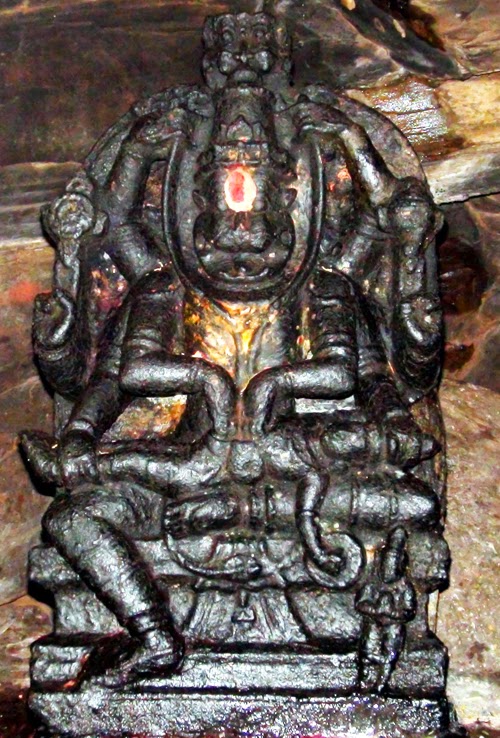
1. Ahobilam Narasimha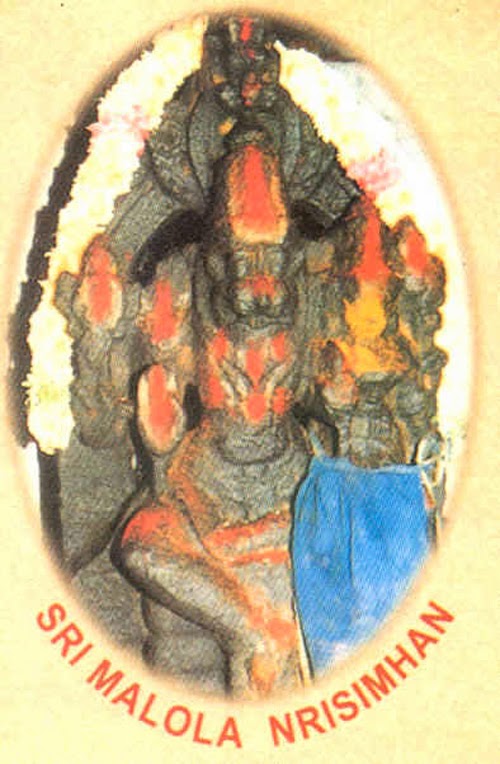
The temple, situated on the Upper Ahobilam, at a distance of 8km from the Lower Ahobilam, is the main temple and the earliest of all the nine temples there. The Lord here appears in his fierce aspect, called Ugra Narasimha, who is the presiding deity of the temple and is known as Ahobila Nrisimha Swamy. It is firmly believed the Lord Narasimha was 'Svayambhu' (self-manifest) here.
2. Kroda Narasimha
The temple of this Lord is 1km away from the main temple of Ahobilam Nrisimha Swamy on the Upper Ahobilam. The image of the deity has the face of a boar (varaha or kroda) and the Lord is seen along with his Consort, Lakshmi. Hence the Lord of the temple is known as Krodakara (Varaha) Narasimha Swamy here.
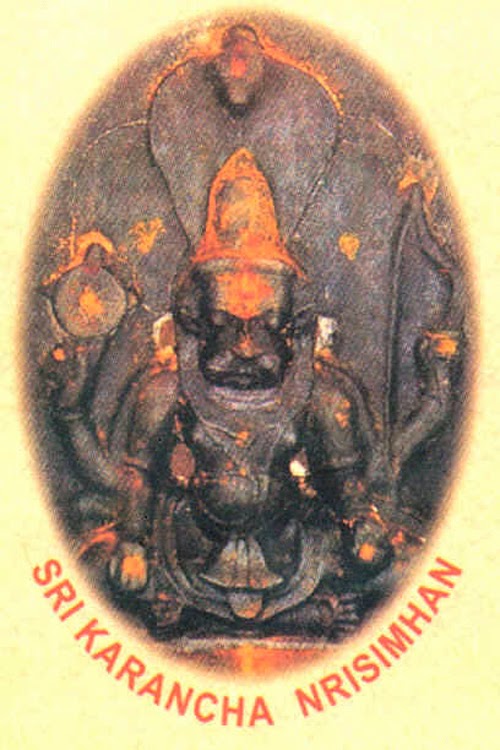
3. Jwala Narasimha
The temple of Jwala Nrisimha Swamy, lies higher up the above temple, on a hill called, 'Achalachaya Meru'. This is about 4km from the Upper Ahobilam temple. This place is said to be the actual spot, where the fierce anger of the Lord reached its culmination when he tore Hiranyakasipu.
4. Malola Narasimha
Nearly 2km from the main temple of Upper Ahobilam, is the famous shrine of Malola Narasimha Swamy. The deity here appears in 'soumya' (graceful) form. As Lord Narasimha is seen with his consort, Lakshmi, He is known as Malola Narasimha Swamy. The word 'Malola' means beloved to Lakshmi (Ma=Lakshmi, Lola= beloved).
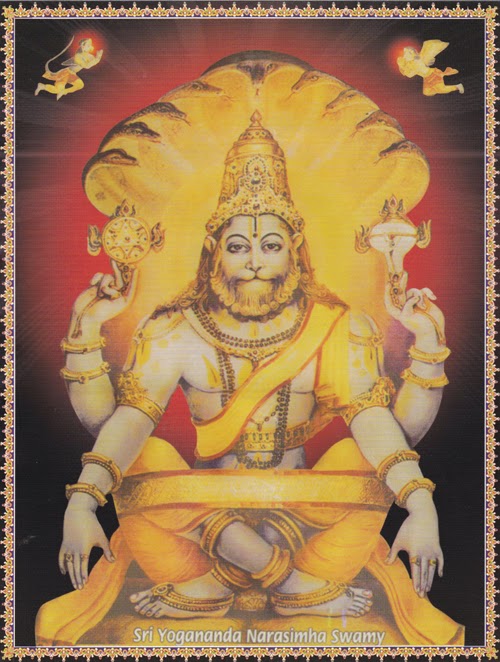
5. Karanja Narasimha
This shrine is situated at a distance of 1km from the Upper Ahobilam and one furlong from the road leading to Lower Ahobilam. The image of the deity is installed under a tree, called 'Karanja Vruksham'. Hence this Lord is called Karanja Narasimha Swamy.
6. Yogananda Narasimha
This temple is to the south-east of Lower Ahobilam at a distance of 2km. The popular legend is that after killing Hiranyakasipu, Lord Narasimha taught Prahlada several yogic postures. Therefore, the Lord in this aspect is called Yogananda Narasimha. It is on the same route to Pavana Narasimha.
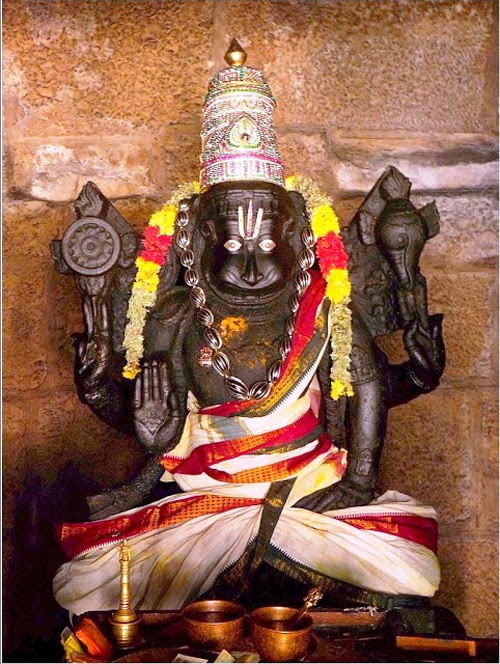 7. Chatravata Narasimha
7. Chatravata Narasimha
About 3km from lower Ahobilam, the image of the deity is installed under a peepal tree, surrounded by thorny bushes. Hence, the Lord is called as Chatravata Narasimha Swamy. It is on the same route to Pavana Narasimha.
8. Pavana Narasimha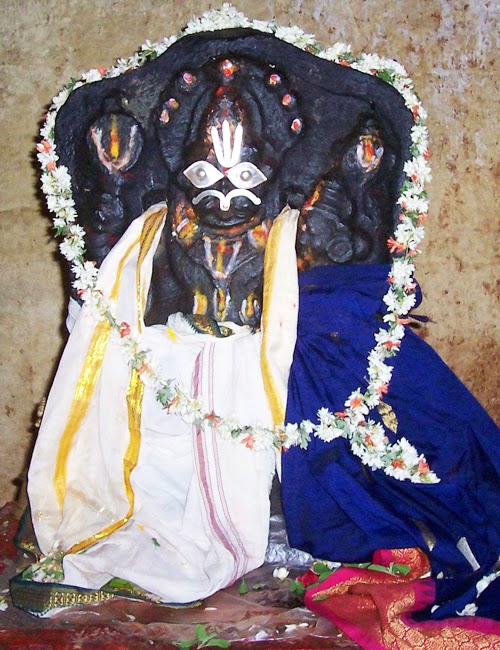
Pavana Narasimha is on the banks of the river, Pavana and it is about 6km from the Upper Ahobilam temple. Hence the Lord of the shrine is known as Pavana Narasimha Swamy.
In addition to the shrines mentioned above, there is a famous shrine dedicated to God Narasimha Swamy in the Lower Ahobilam, which is popularly known as Prahlada Varada Sannidhi. The other objects of this place are 'Ugra Sthambham' and 'Prahlada Mettu'.
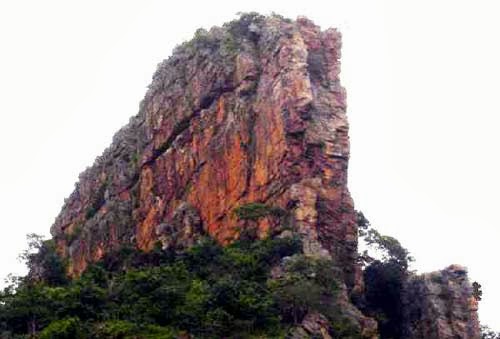
A. Ugra Stambham
At a distance of 8km from the Upper Ahobilam temple, we can see a cleft of the mountain dividing it into two visible parts. It is a long-held view that from the cleft, the Lord appeared in the form of Narasimha and this cleft is known as 'Ugra Sthambham'.
B. Prahlada Mettu
The small shrine, situated in a cave on the hill, is in between Ugra Sthambham and the Upper Ahobilam. It is dedicated to Prahlada Narashimha Swamy. The image of the Prahlada is installed in a small cave.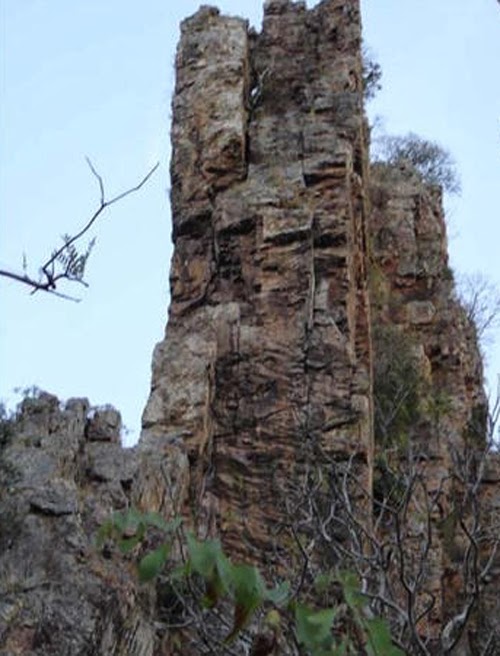
9. Bhargava Narasimha
The Bhargava Narasimha Swamy is situated at a distance of 2km from the Lower Ahobilam, on a hill, near the sacred pond, known as 'Bhargava Theertham', where Bhargava Rama performed his penance. Hence the Lord of the temple is known as Bhargava Narasimha Swamy. It is different side of Pavana Narasimha.
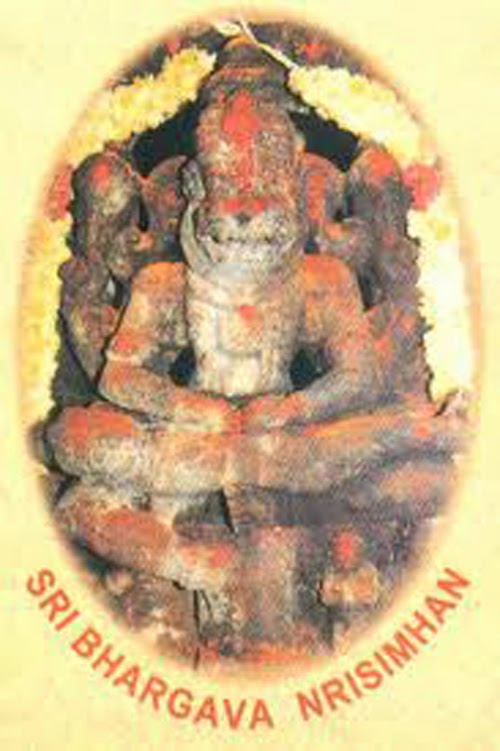
Secret of this temple is we have to cover all 9 Narasimha temples in a single day.